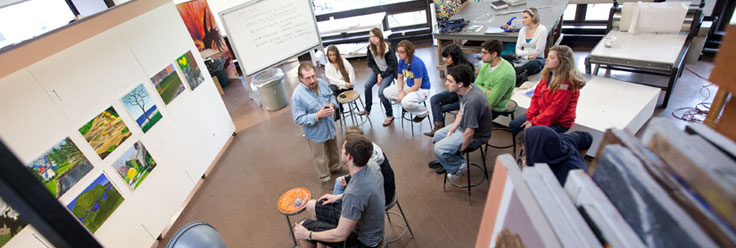Another barely architectural post wherein I ruminate on elementary education models. Here in rural Vermont we have to make choices about how and where we educate our children just like anywhere else. There are the public schools, private schools and home schooling. There are special challenges that we face that may surprise some of you. We have no worries about our own children's abilities in reading writing and arithmetic. This year at our local public elementary, transportation is an issue. We will have to drive our daughter 9 miles to school over mostly dirt roads and then pick her up after school. Class size is also an issue – she will only have three classmates. My daughter is entering kindergarten this year after spending a few years in pre-K at Neighborhood Schoolhouse. Neighborhood is a great school without any particular “dogma” that we found at other early education centers such as Montessori and Waldorf. Neighborhood actually goes up to grade 6 but we preferred not to keep her there through 6th grade or reasons I shall touch on below.
Last year I realized that I knew very little about how school is currently taught and what the different models and options where so I began a process of self-education. I quickly learned about the good and bad aspects of modern education. I finally learned what “teaching to the test” means. There is a bit too much of this at the school she will attend starting tomorrow (our local public school) but I expect it will be tempered with the fact that she will have only three other classmates and therefore her individual needs will not be ignored. I also think a bit of this rigor might do her some good. I have become a big fan of integrated and project based learning and I hope to send our own kids to schools where these are the prevalent learning methods. Edutopia is a great resource for information on this and I am a big fan of “the World in Claire's Classroom” a film about a local school. (Everyone with kids should see this)
I can look back on my own architecture school education as a model of how project based learning works. A very important aspect of architecture school was having 50 classmates all working on similar projects and grappling with similar issues individually and in groups. It would have been a very different education if there where only 6 of us. This was the main reason I dropped out of the art program at my first college. My own elementary education followed a more traditional model where we learned math out of a textbook, did worksheets, wrote research papers and book reports etc. It didn't work very well for me (I had an amazing ability to completely forget everything I learned over the summer) and I expect it won't work very well for my daughter either. Project based learning applies a method of learning more similar to architecture school to grade school education and seems difficult to incorporate into lesson plans for small classes with limited community involvement.
Which brings me to an issue which is important to us – class size. Locally, The Grammar School in Putney is a great example of a school that incorporates project based learning, has excellent teachers who are all on the same page with regards to learning methods, has adequate class size and has a huge variety of resources outside the classroom to call upon – involvement with the local community and the “real world” are important aspects of project based learning. We hope to send our kids there in the future – when we can afford to. Neighborhood Schoolhouse incorporates project based learning but really suffers from inadequate class size and resources once kids get beyond kindergarten and first grade. However, Brattleboro is a great place to raise community minded kids no matter what school they attend. There is a tremendous array of opportunity in music, theater and circus arts, sports and other activities to engage in outside of school. My daughters attended her first Sweetback Sisters concert when she was only a few months old and we get her to as many concerts and museums and so forth as we can.




